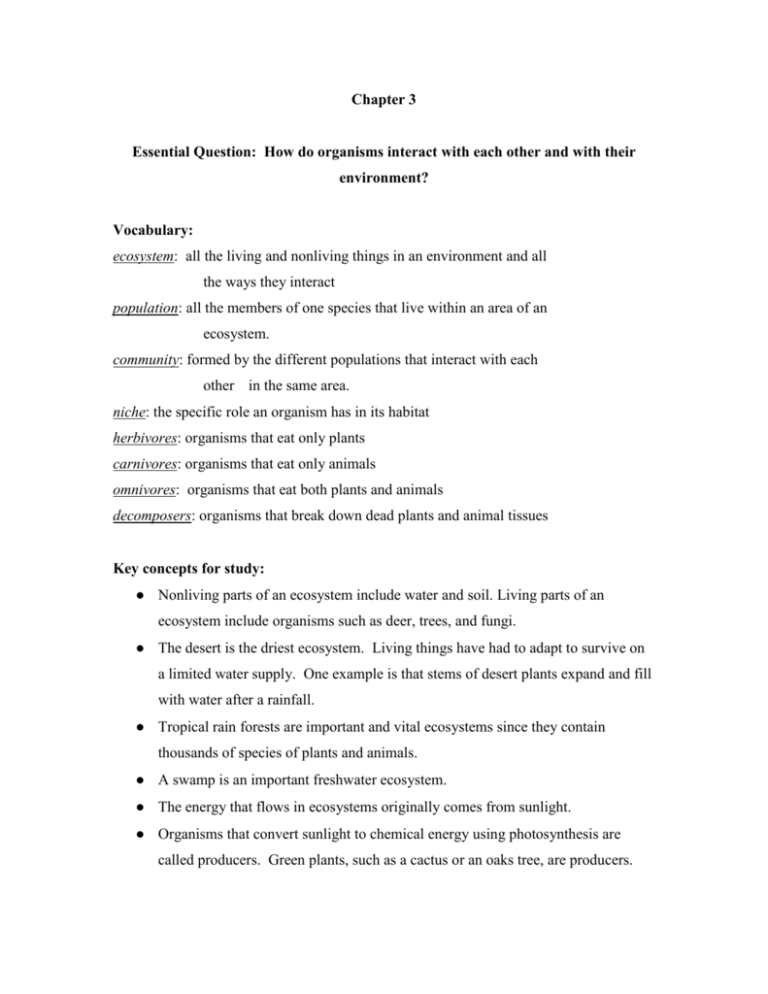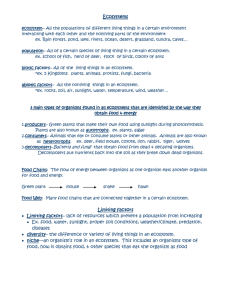Science Chapter 3 Study Guide
advertisement

Chapter 3 Essential Question: How do organisms interact with each other and with their environment? Vocabulary: ecosystem: all the living and nonliving things in an environment and all the ways they interact population: all the members of one species that live within an area of an ecosystem. community: formed by the different populations that interact with each other in the same area. niche: the specific role an organism has in its habitat herbivores: organisms that eat only plants carnivores: organisms that eat only animals omnivores: organisms that eat both plants and animals decomposers: organisms that break down dead plants and animal tissues Key concepts for study: ● Nonliving parts of an ecosystem include water and soil. Living parts of an ecosystem include organisms such as deer, trees, and fungi. ● The desert is the driest ecosystem. Living things have had to adapt to survive on a limited water supply. One example is that stems of desert plants expand and fill with water after a rainfall. ● Tropical rain forests are important and vital ecosystems since they contain thousands of species of plants and animals. ● A swamp is an important freshwater ecosystem. ● The energy that flows in ecosystems originally comes from sunlight. ● Organisms that convert sunlight to chemical energy using photosynthesis are called producers. Green plants, such as a cactus or an oaks tree, are producers. ● A producer is different from an herbivore because producers make their own food, and herbivores eat producers. ● Consumers are organisms that get their energy from eating other organisms. When animals eat other organisms, they take in energy and matter. ● Decomposers help put minerals and nutrients back into the ecosystem. Living things break down more quickly than things that were never alive because decomposers begin to break down dead organisms immediately. ● A scavenger gets its energy by eating dead plants and animals. ● A food chain shows the direction of the energy flow in an ecosystem. ● A food web is a group of several, overlapping food chains. ● Water and warm temperatures cause items such as food to decay more quickly. Food is stored in a refrigerator because food decays more slowly in cool temperatures. ● Items such as bread will decay more quickly than items made of plastic, metal or rock.








